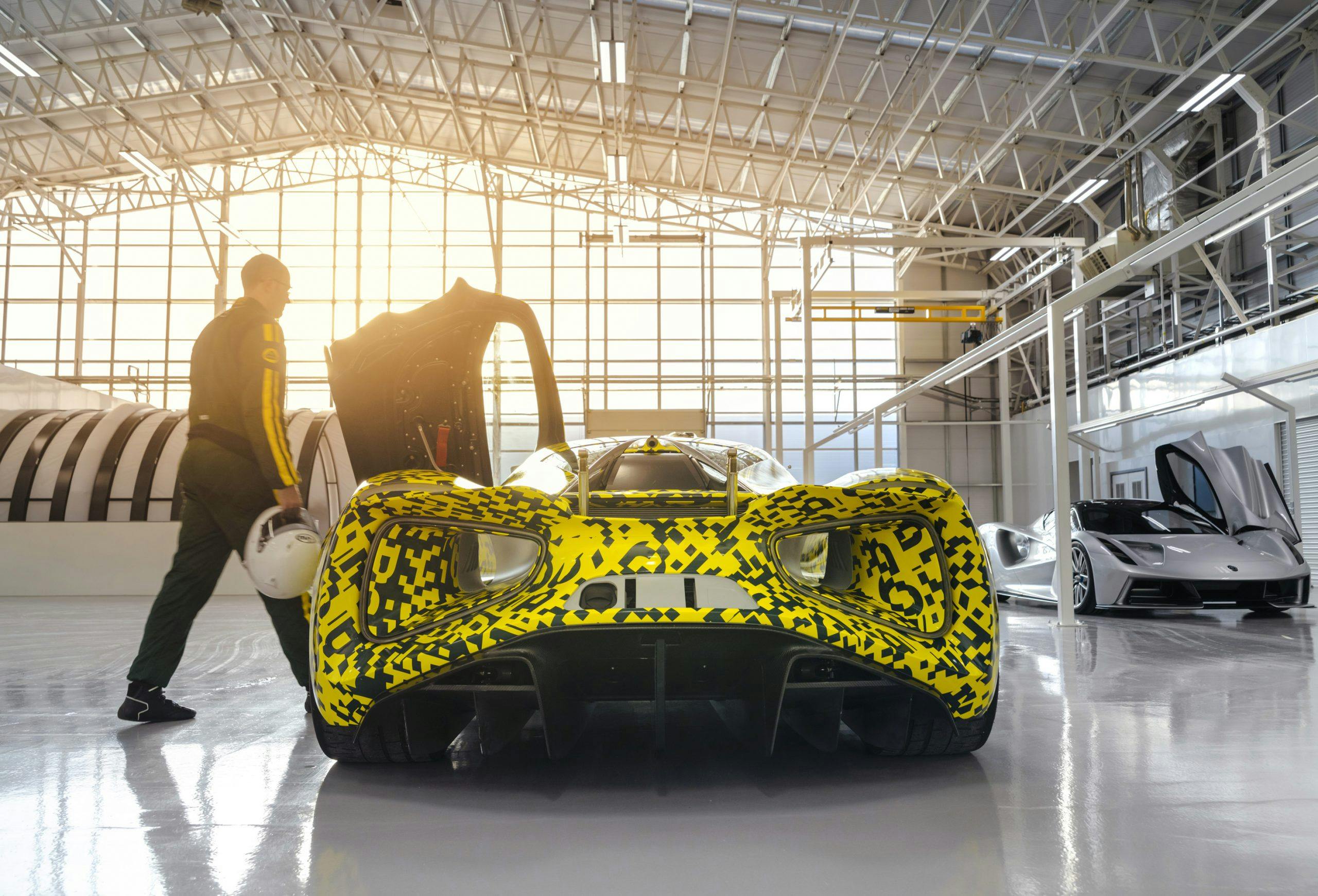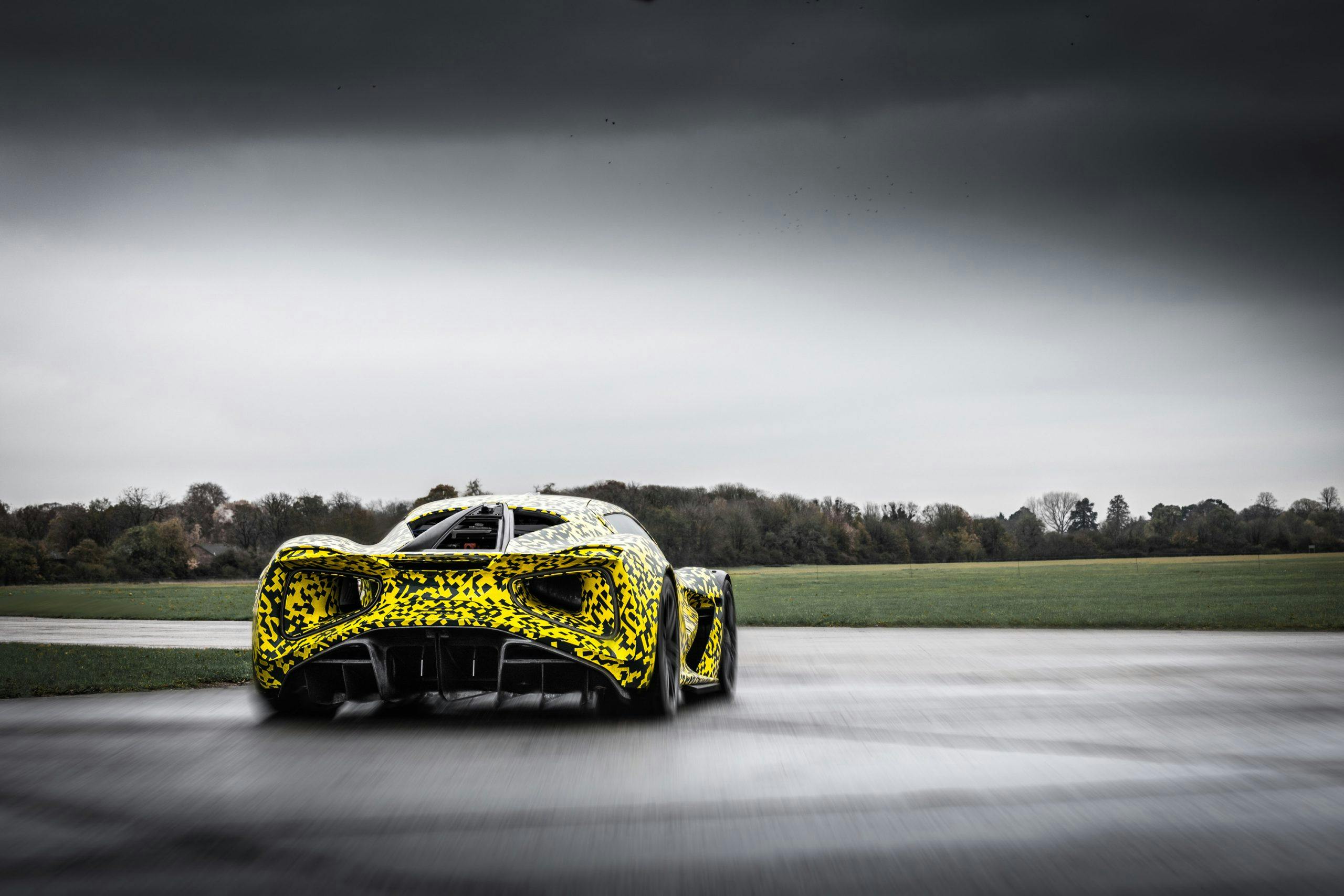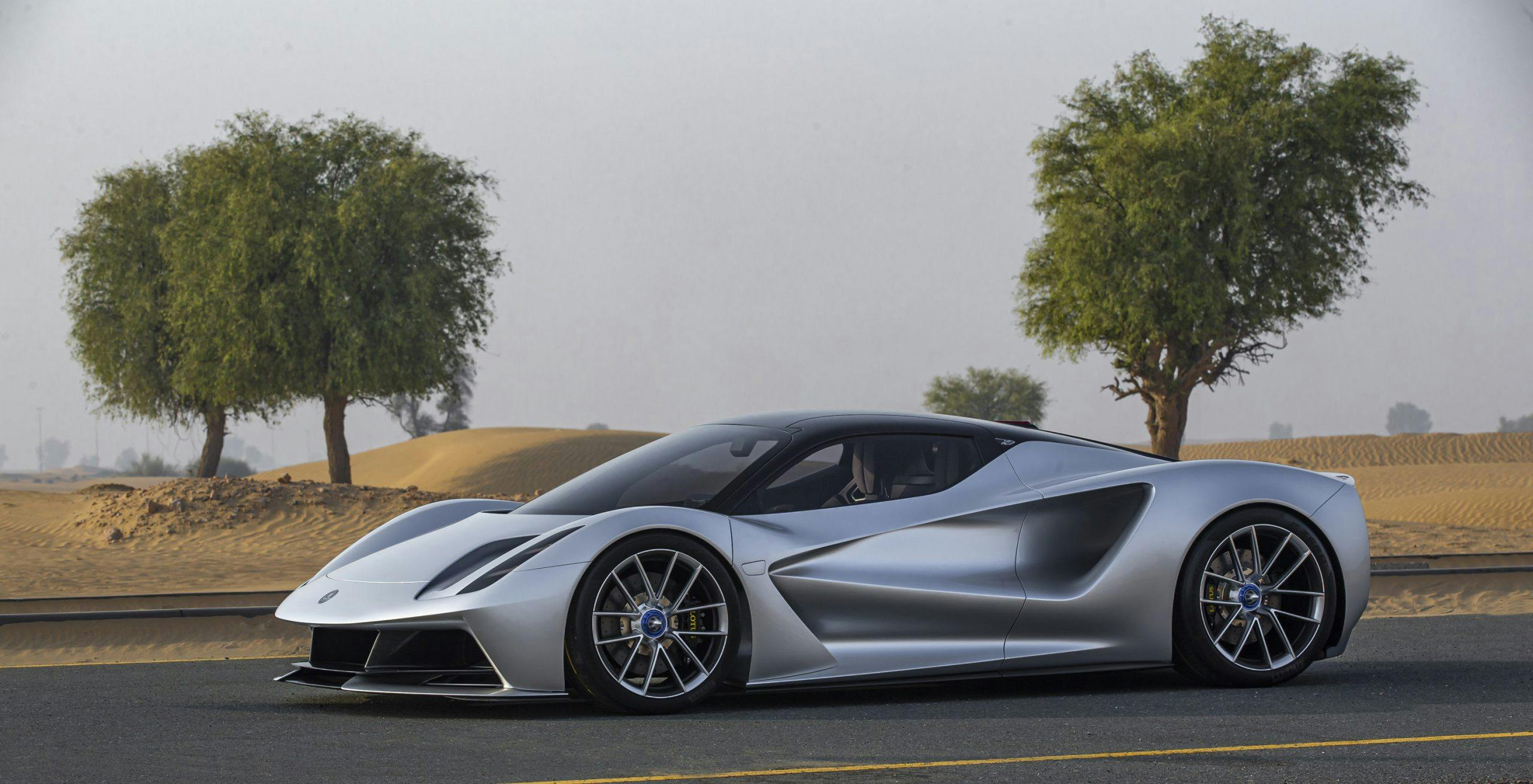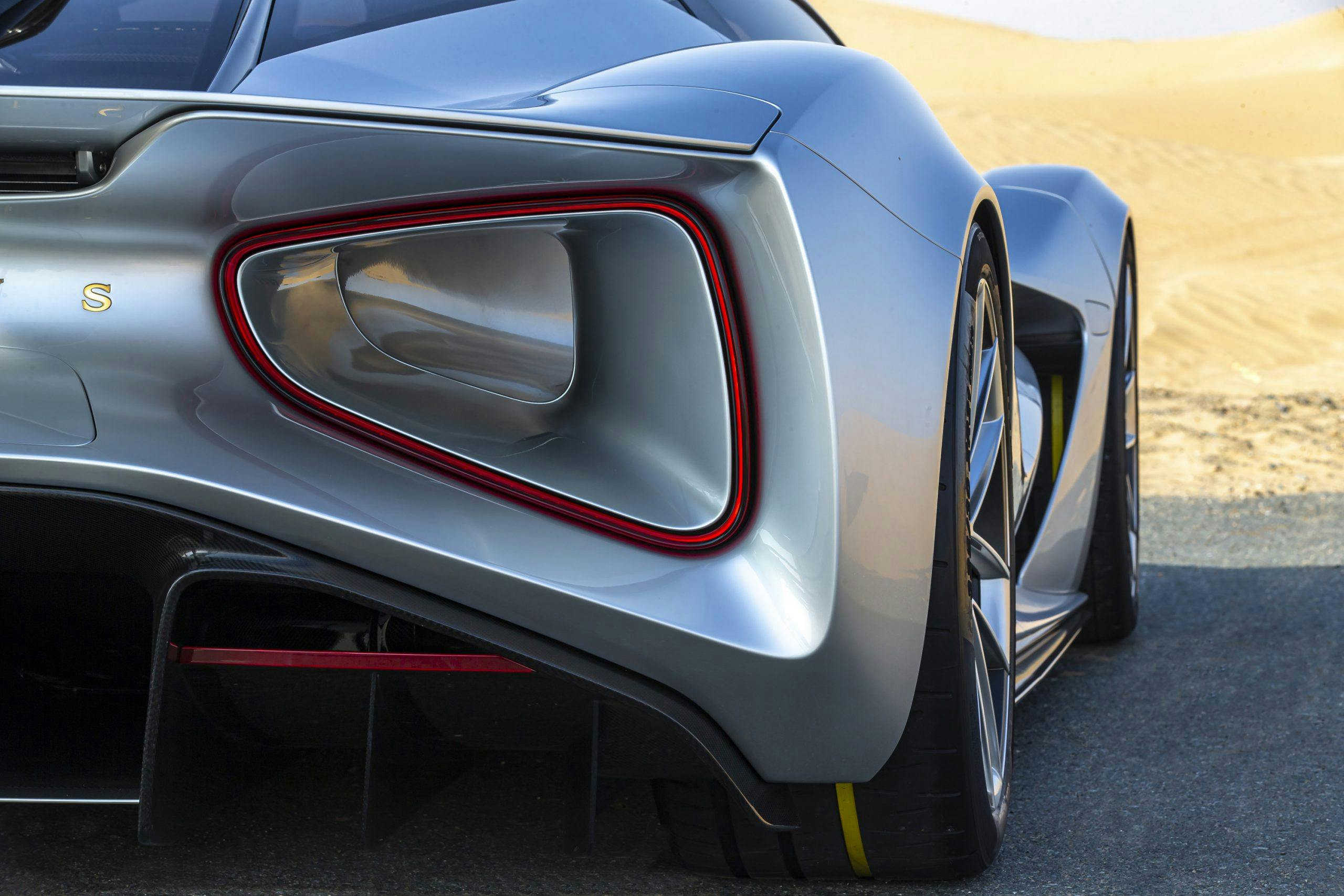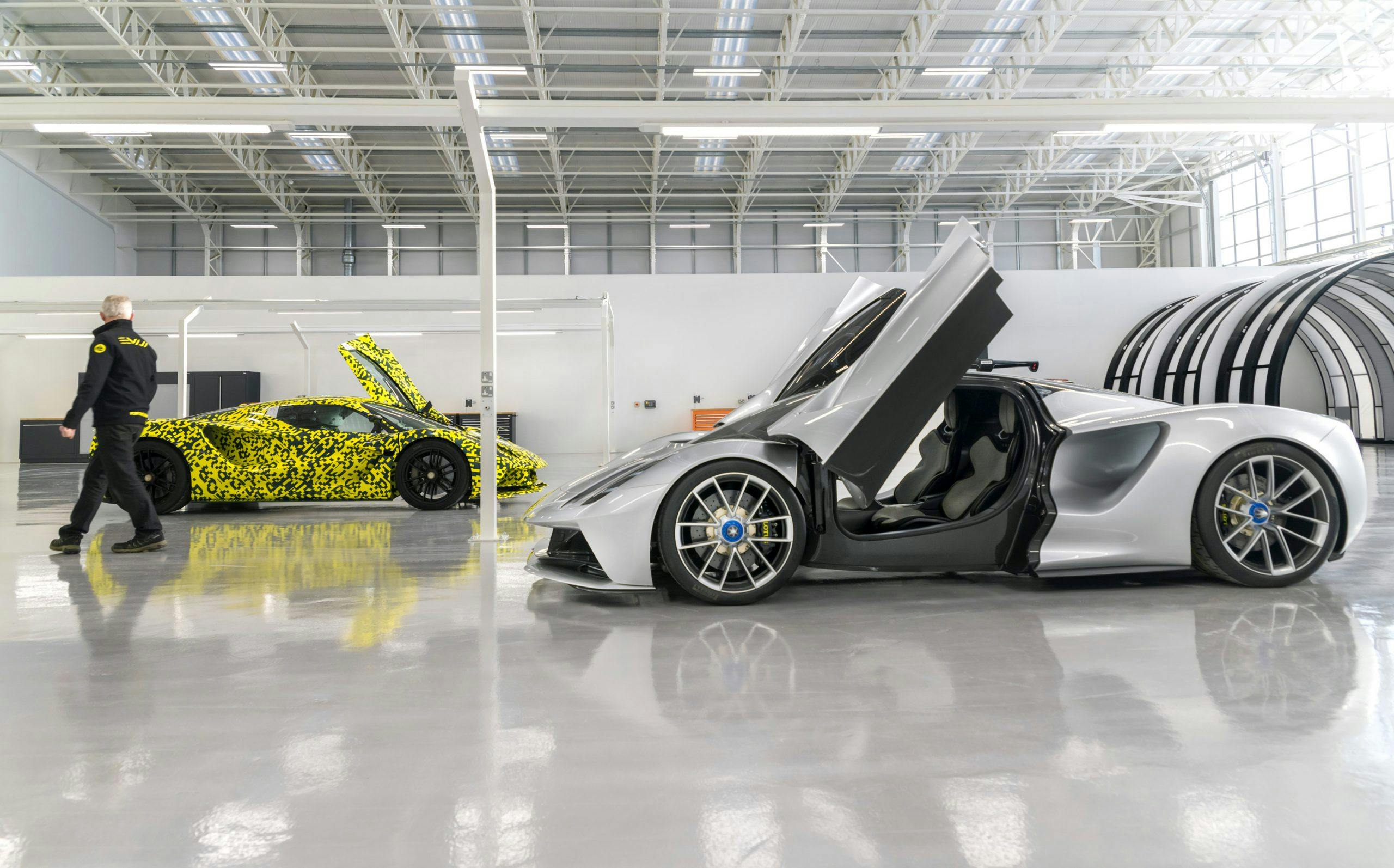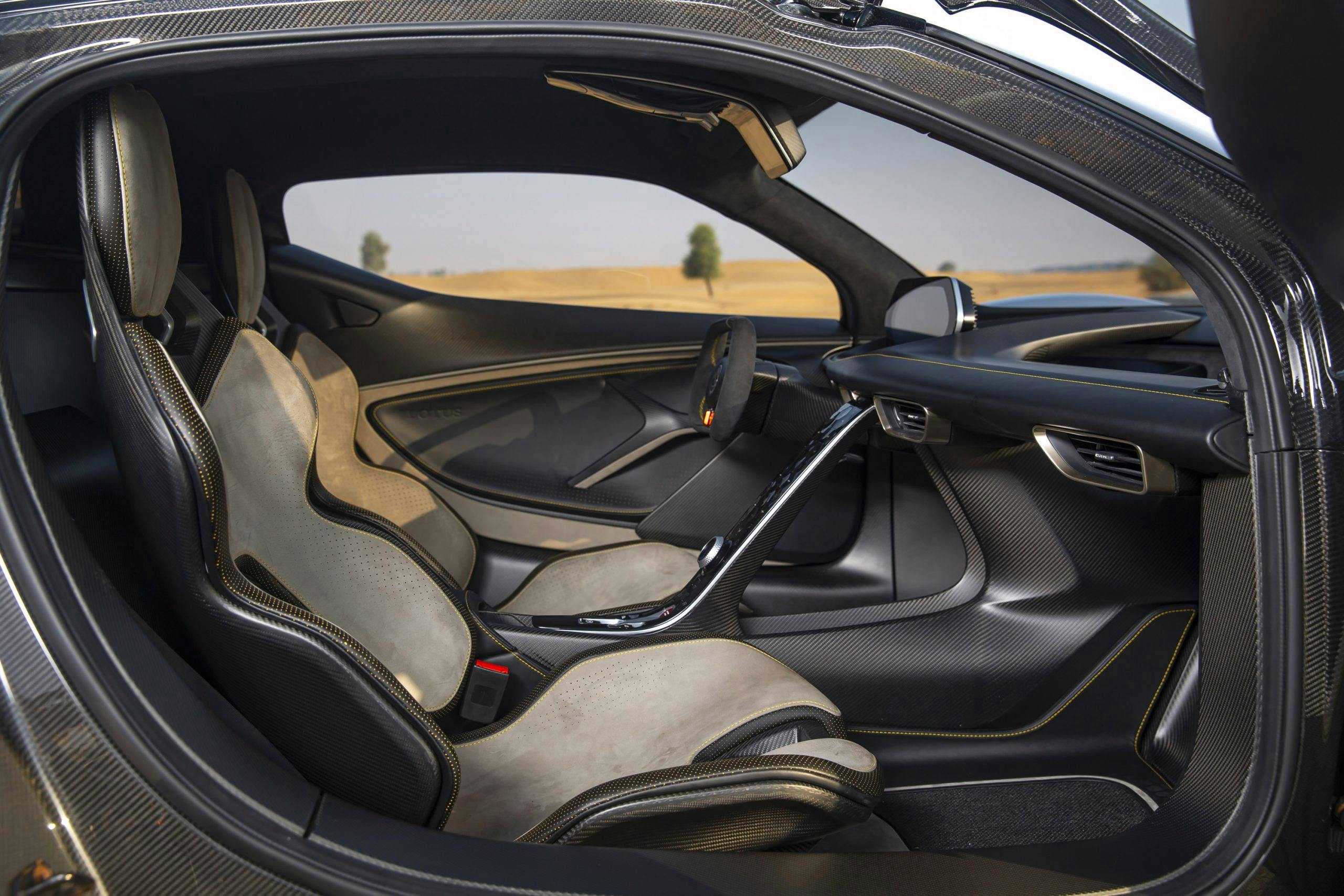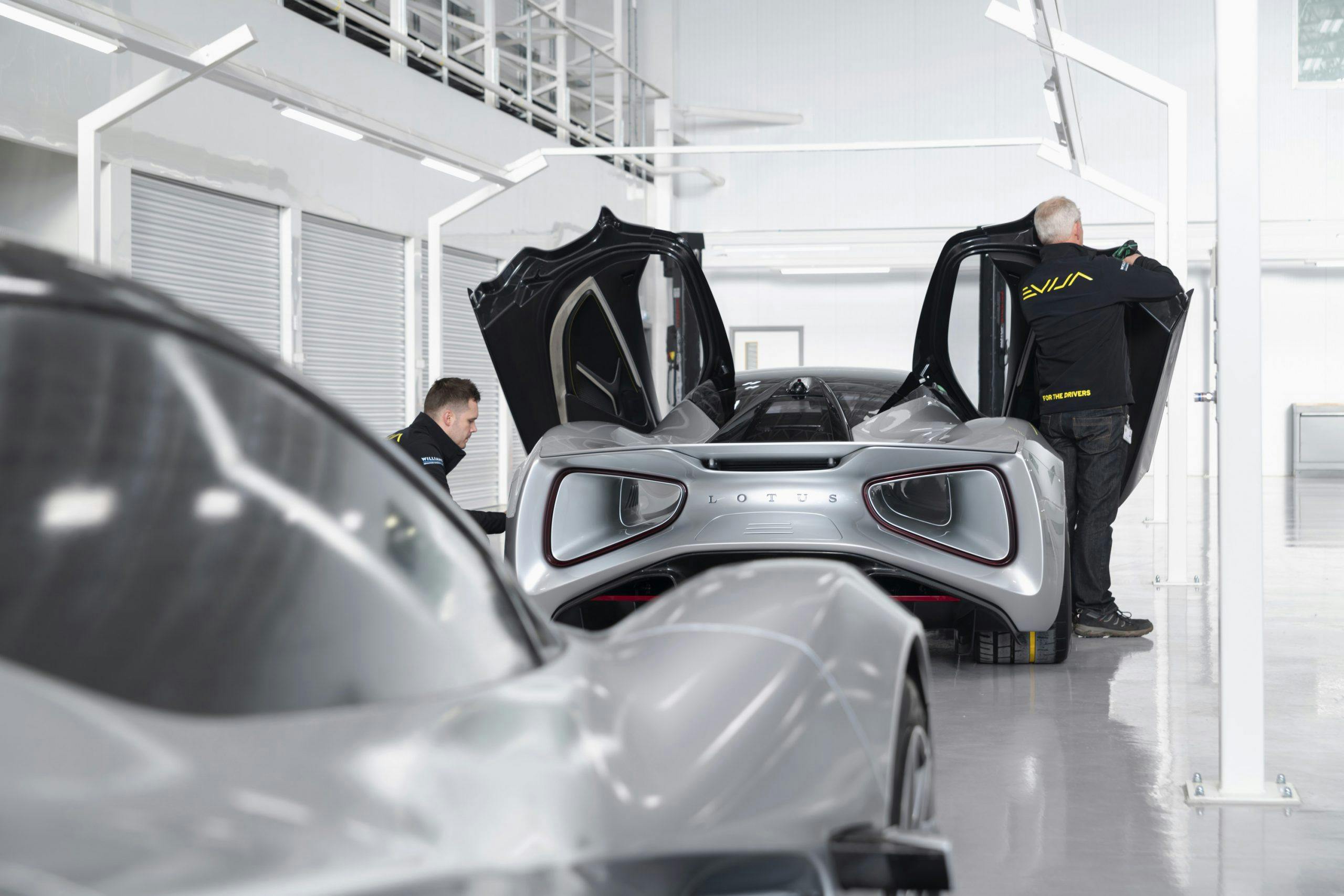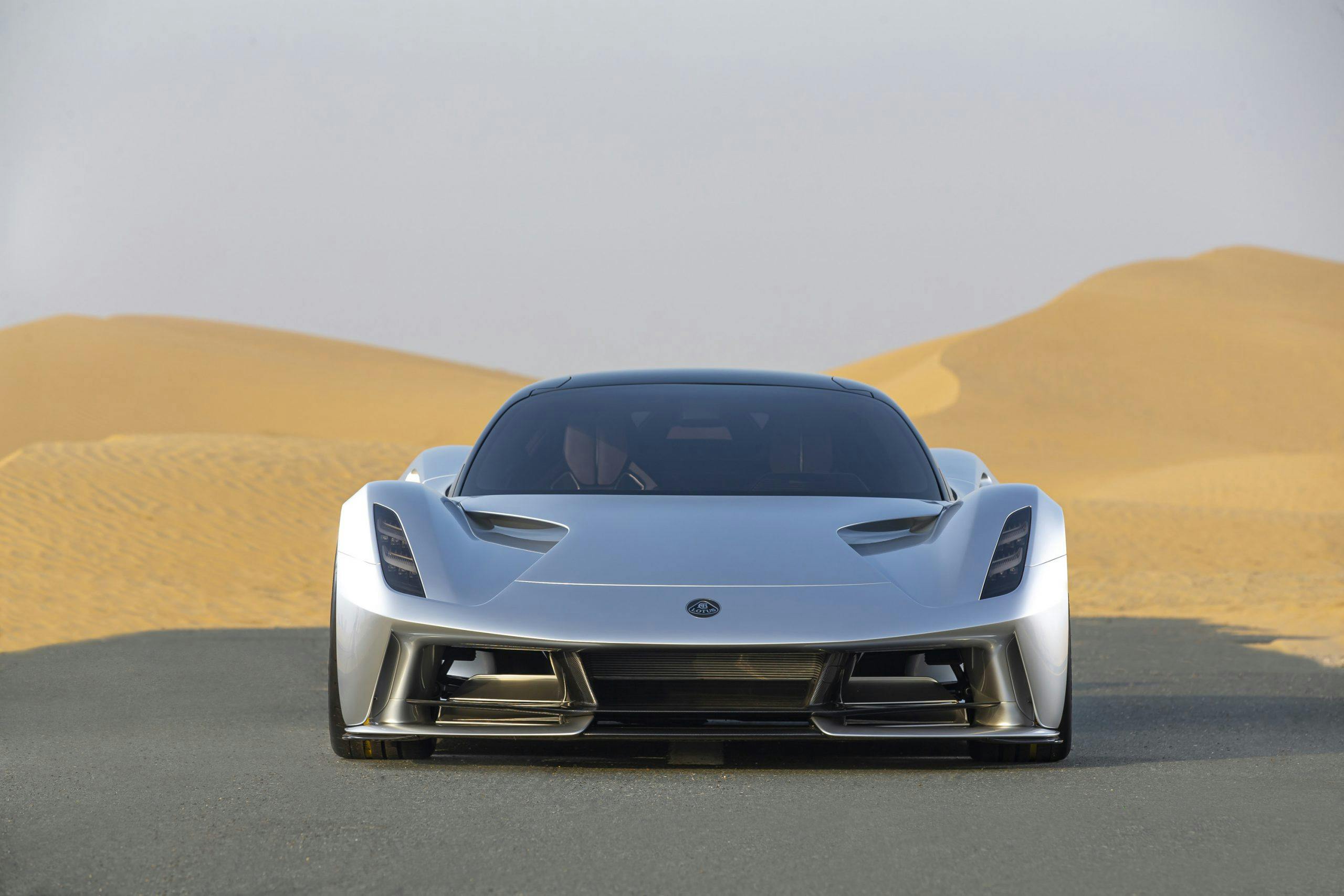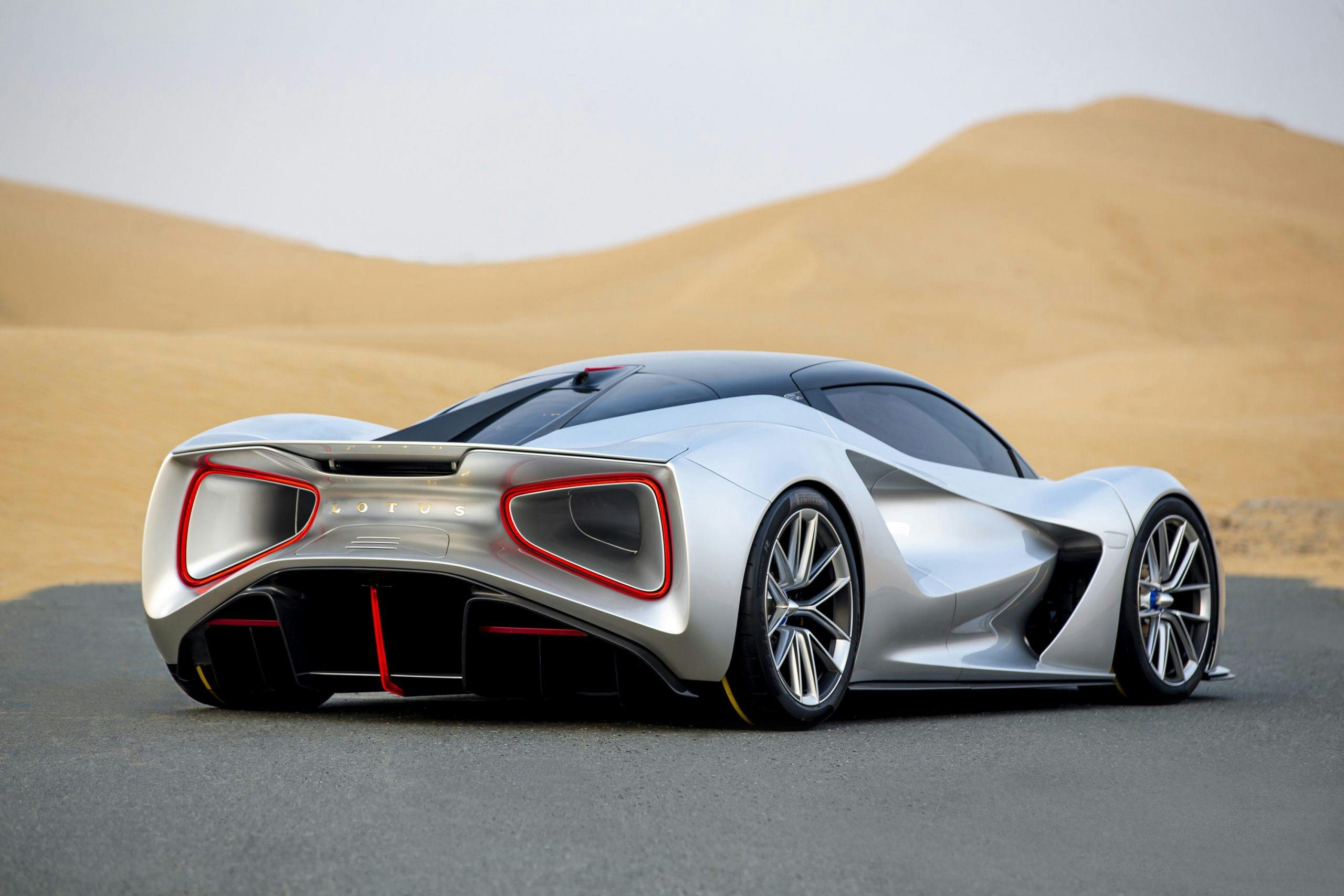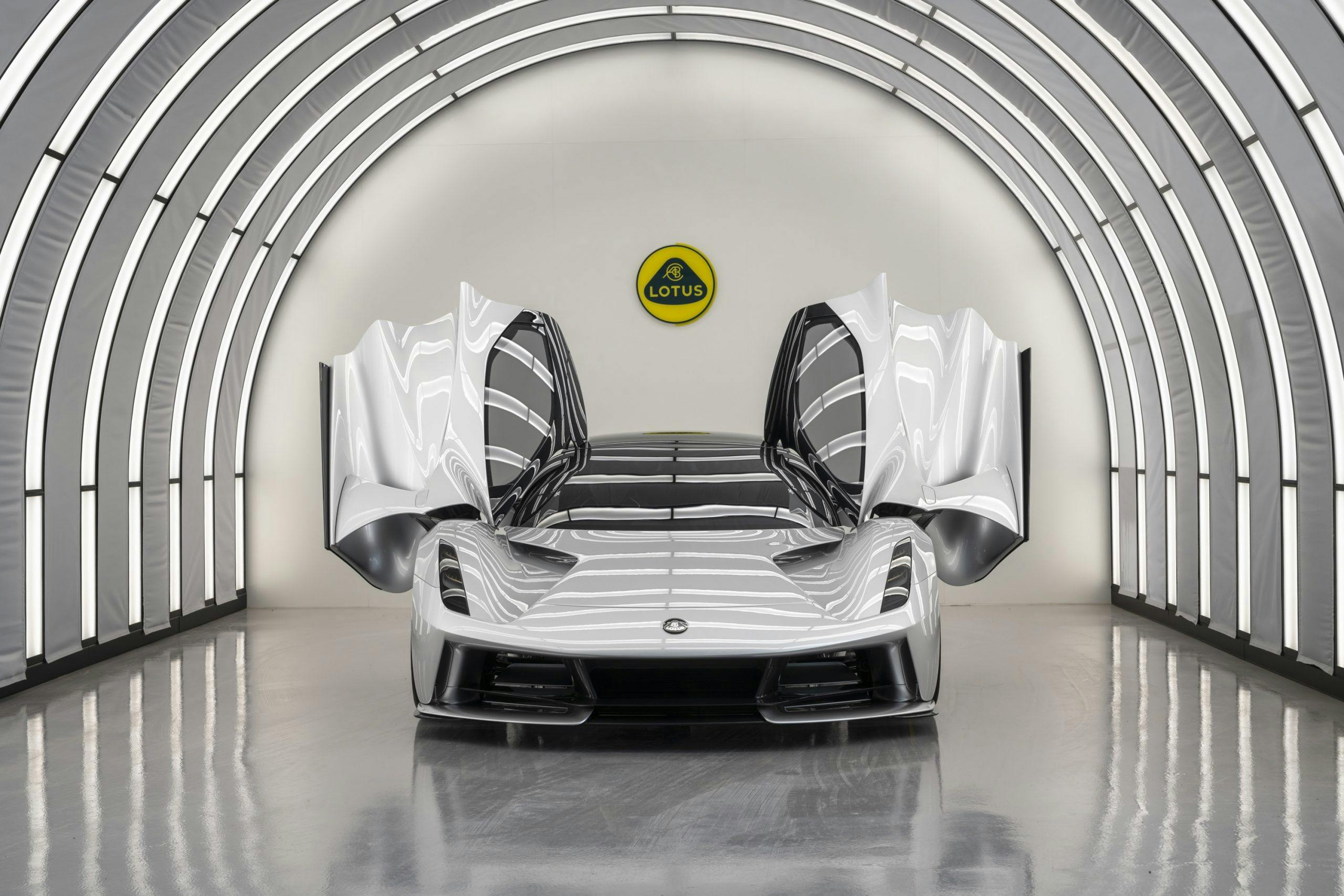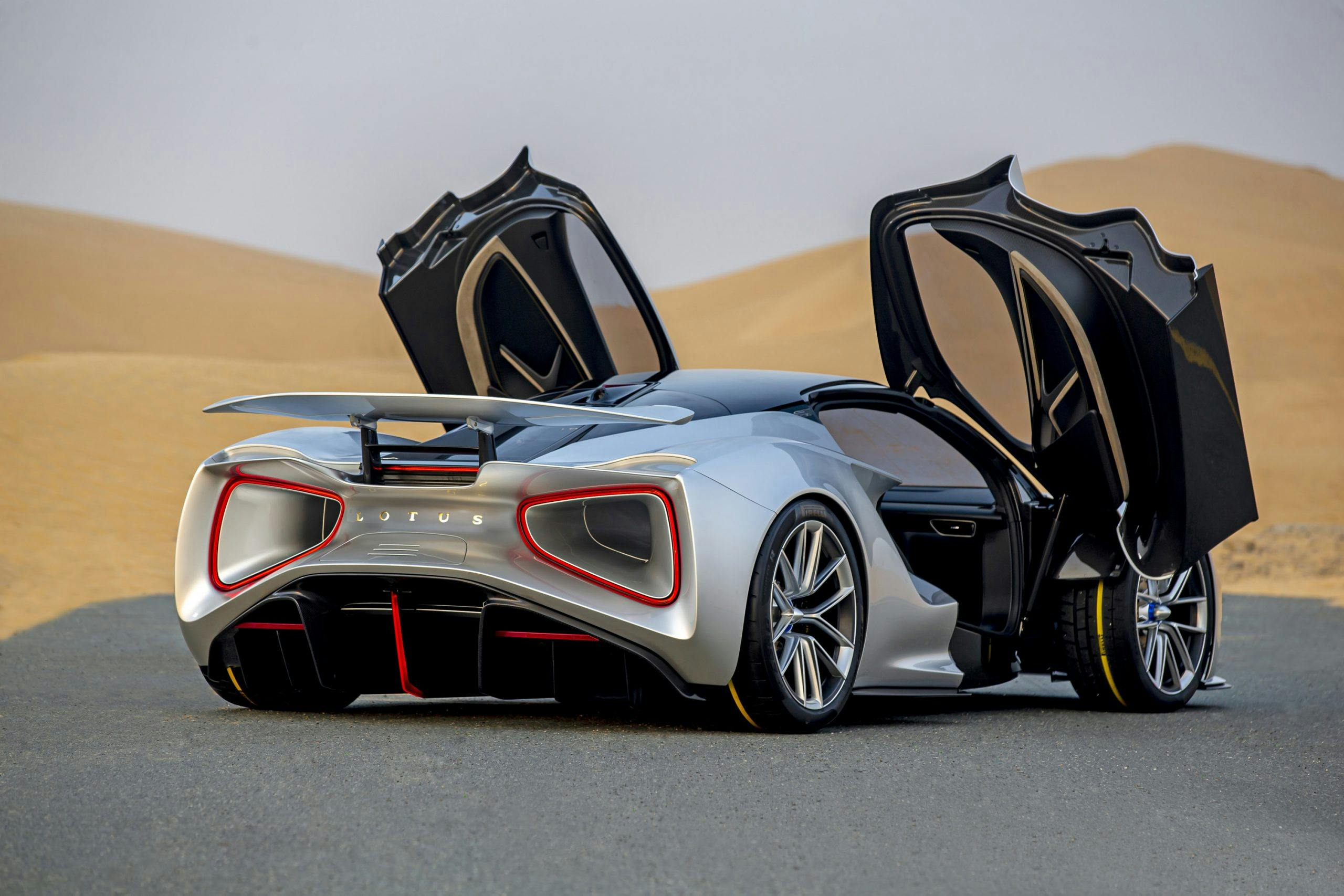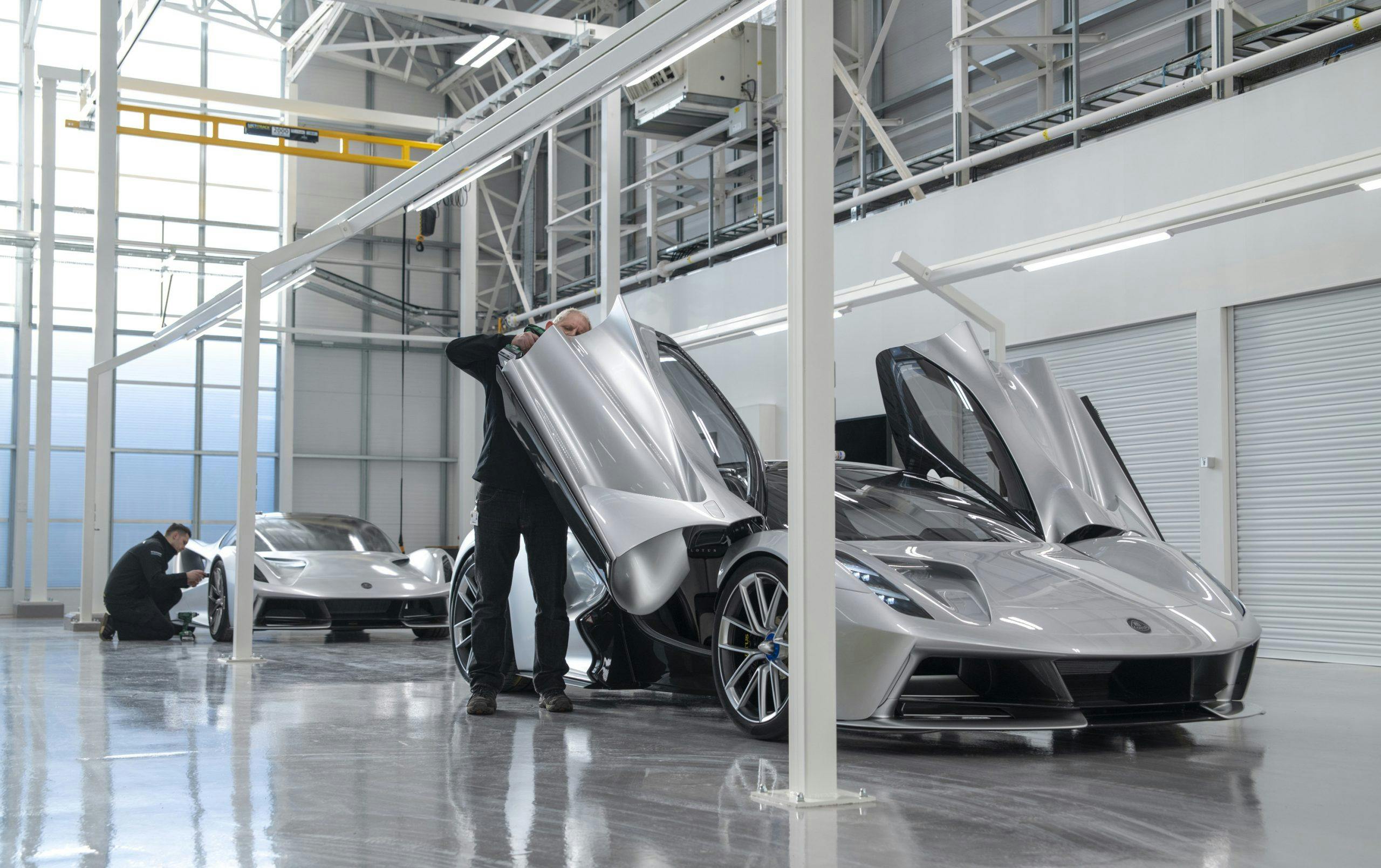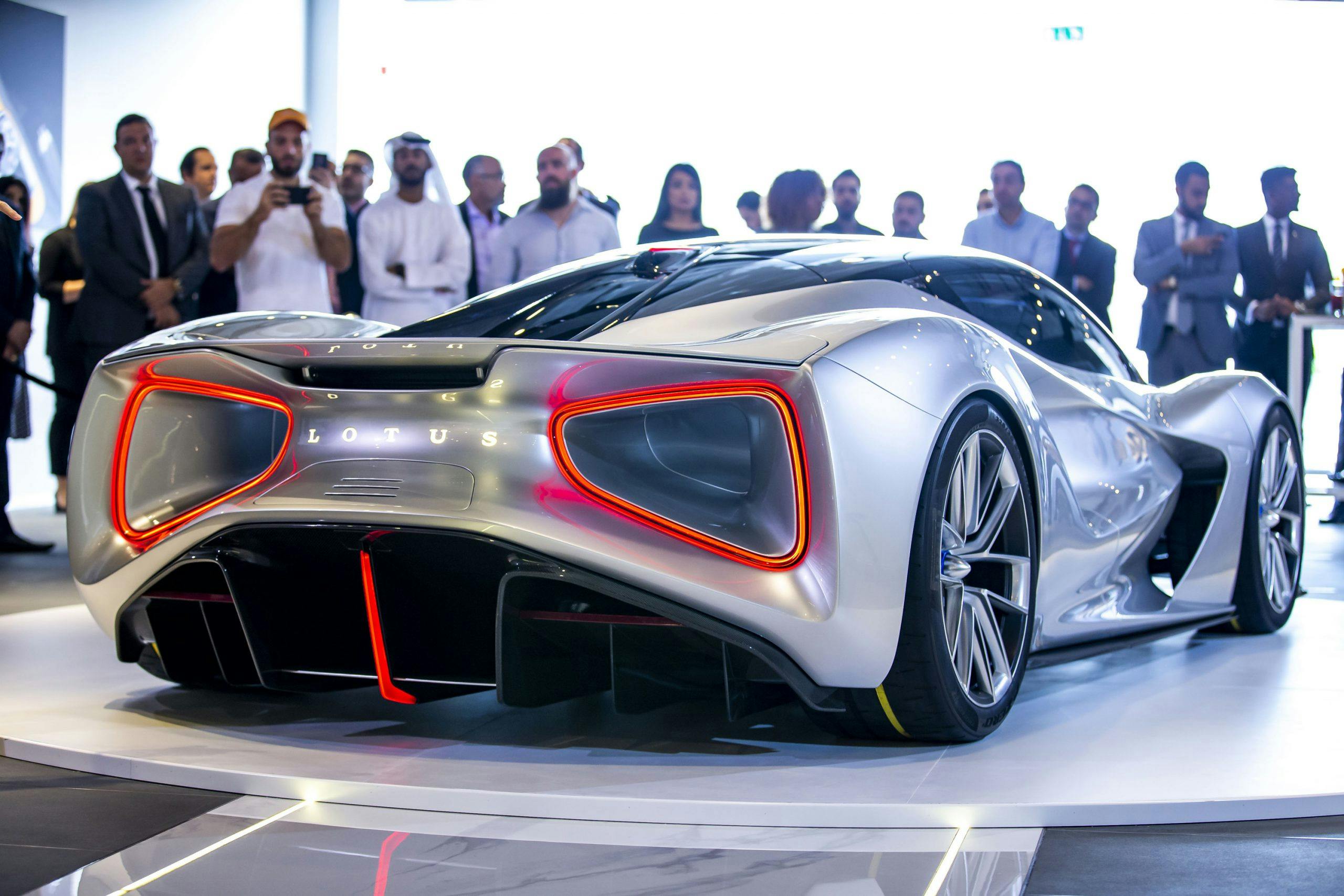Media | Articles
Lotus shows how performance EVs can use air like no combustion-engined supercar
Whether it uses an electric or a combustion powertrain, a car with mid-engine proportions will always have huge intakes at the front to cool low-temperature radiators and brakes with an energized flow of clean air. In addition, it’ll sport deep front splitters to balance out the rear wing with sufficient amounts of frontal downforce. The underside of the car will be flat with deflectors channelling and accelerating air towards the massive rear diffuser, which will help that air leave by sucking the car to the ground without increasing drag by much.
At this point, with an active wing high up in the clean air, the aero package is mostly complete. The final components include the side intakes and other surfacing details that the fusion of computer simulations and design talent put on the car to aid cooling, create additional downforce, or simply make the body a whole lot sleeker. Above certain speeds, form must follow function—even if the end result seems too sexy to be translated into numbers.
What if side intakes don’t send the air into massive heat exchangers, though, and that high-speed cocktail of nitrogen, oxygen, and other less significant members of the band called air don’t have to find their way around large engines and their complicated tubings? Lotus can tell you, because its new 1972-hp Evija’s porosity goes beyond any road car we’ve seen so far.
Unlike the equally powerful Rimac C_Two—a fellow hyper-EV using a floor-mounted, H-shaped battery pack—this Lotus is powered by a 70-kWh lithium-ion package that puts both cells and inverters right behind the seats. Lotus says this layout delivers “significant advantages in terms of styling, aerodynamics, packaging, weight distribution, occupant comfort, and dynamic handling.” What’s certain is that such packaging allows for massive Venturi-tunnels that don’t act like side air intakes; instead, they feed the wake towards a clean exit, framed by the Evija’s unusual LED taillight strips.
Marketplace
Buy and sell classics with confidence
The combination of this porosity, active aerodynamics, and 1253 lb-ft of electric torque being sent back and forth between the wheels should make the Evija quite effective, despite its curb weight of 3703 pounds. Standing next to the first Evija show car last summer, I’ve talked about this with Lotus Design Director Russell Carr, and he had this to say about the EV’s lines:
“Lotus is all about the driving dynamics, and you want the car to look agile and athletic. Another Lotus trait is aerodynamics, so on this car, we have an interesting way of managing air flow. We’re not the first to do it, but we’ve done it in an interesting way. Which is not just managing the air flow over the top surfaces of the car and underneath, but also through the car.
“If you look at the front, it’s all completely open, so that allows the air to go into the wheel arch and evacuate at high velocity at the rear. That reduces drag, and on this car, we want minimum drag, maximum downforce, and so, huge amounts of CFD (computational fluid dynamics) work was done. The front splitter and above is not a simple surface, it’s multiple aero elements. And I like how you can see the car as a whole, but then it reveals some interesting technical things. It’s really important for us to balance form and function, or as Cadillac used to say “art and science,” because that’s Lotus. Very technical solutions, yet beautiful cars. And it’s what we want to do—a beautiful car, really. Not doing things just to shock.
“I should say as well—this openness, the aerodynamicist call it porosity, or transparency. But we also wanted to make the car look sculptured, a little bit different from some of the more brutal, maybe track-focused cars. Something that is purposeful, but also elegant as well. We have almost aerospace shapes, and we used aeronautical things as our influence.”
When the task is to reduce drag and manage lift at speeds dictated by an immensely powerful drive system, airplanes tend to be good sources of inspiration. And with that in mind, Lotus came up with the following for its Williams-propelled electric hypercar, which comes with four hub motors to leave room for optimized aerodynamics:

